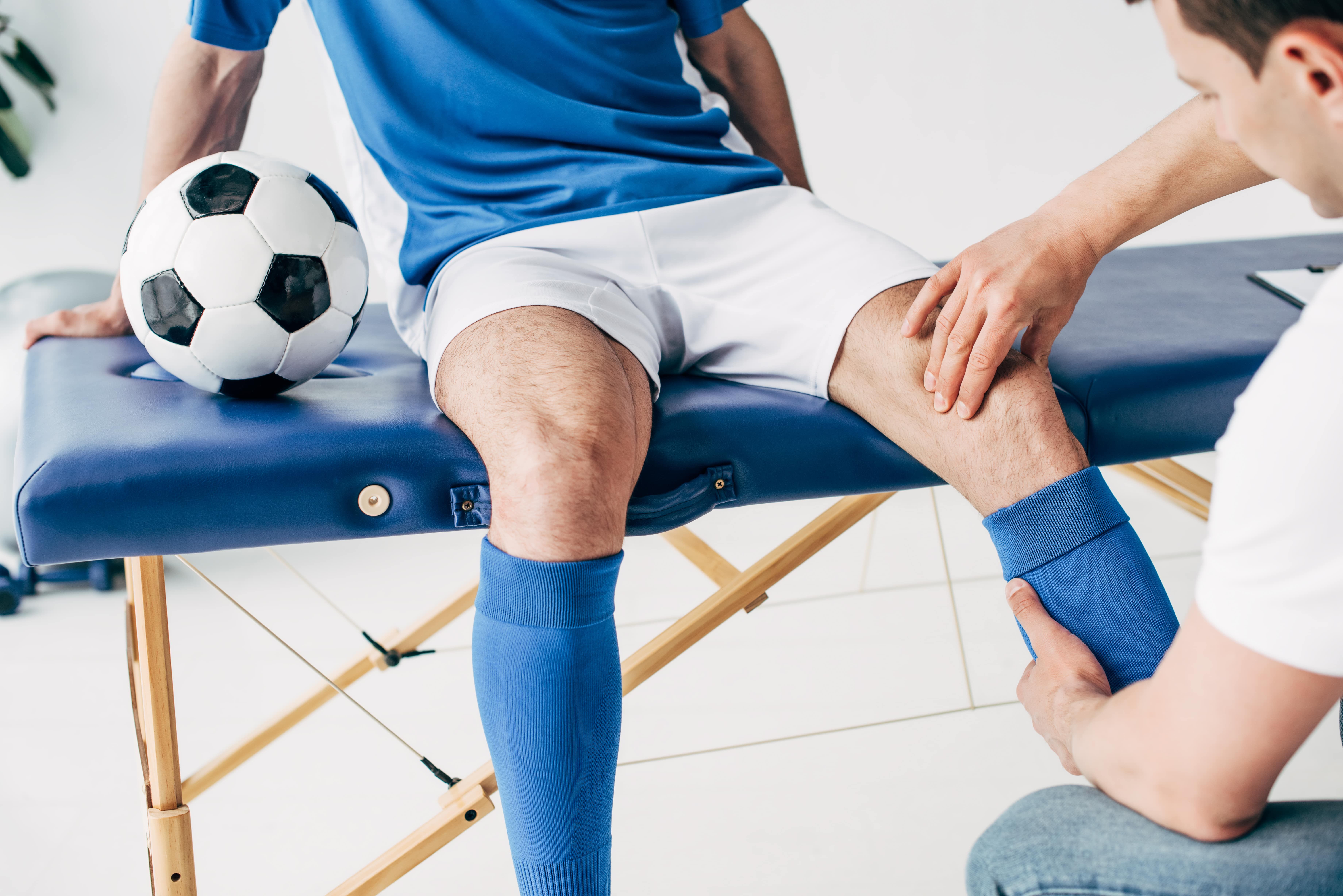Fall Sports Injuries: Football, Volleyball, and How MidAmerica Helps You Get Back in the Game

Fall brings packed fields, packed schedules, and — unfortunately — a rise in sports injuries. Whether it’s Friday night football or a weekend volleyball tournament, the fast cuts, high-impact collisions, and repeated jumping that make these sports exciting also put players at risk. The good news: with prompt diagnosis, sport-specific treatment, and coordinated rehab, most athletes recover and return to play. Here’s what to watch for, how injuries are treated, and how MidAmerica Orthopaedics supports athletes at every step.
The injuries you’ll see most in football — and why they happen
Football is a contact sport with a high rate of lower-extremity and shoulder injuries. Common problems include:
- Knee injuries — ACL tears and meniscus injuries often occur with cutting, twisting, or direct contact. ACL injuries in particular are common in pivoting sports and can be season-ending without treatment.
- Shoulder injuries — dislocations, AC joint separations, labral tears, and rotator cuff strains can follow tackles, falls, or direct blows. PubMed
- Concussion — head impacts require careful evaluation and a structured return-to-play plan. MidAmerica’s Concussion Clinic focuses on accurate diagnosis and individualized management.
Why it matters: quick assessment reduces the risk of long-term damage. Many football injuries respond well to nonoperative care (rest, bracing, targeted rehab), but ligament tears, unstable shoulders, or fractures may require surgical repair or reconstruction.
Volleyball: common injuries from jumping, spiking, and landing
Volleyball is a high-jump, high-repeat sport. Typical injuries include:
- Patellar tendinopathy (“jumper’s knee”) — repetitive jumping stresses the patellar tendon; it’s common among volleyball players and can become chronic without proper management.
- Shoulder overuse injuries — repetitive spiking and serving can cause bursitis, tendinitis, and rotator cuff issues.
- Ankle sprains and finger injuries — awkward landings and net play frequently lead to sprains, dislocations, and fractures.
Early identification and progressive loading (strengthening + technique work) are key to avoiding long layoffs from volleyball overuse injuries. Johns Hopkins Medicine
First steps after an injury: what to do on the field (or court)
If an athlete goes down, follow these priorities:
- Stop play if there’s severe pain, deformity, loss of function, or suspected concussion.
- Protect the area — immobilize if you suspect a fracture or dislocation.
- RICE for acute soft-tissue injuries — rest, ice, compression, elevation — while arranging prompt evaluation.
- When in doubt, see a specialist. MidAmerica’s Orthopaedic Immediate Care offers direct-to-specialist evaluation for sprains, strains, fractures, and other acute problems — a faster alternative to the ER for many injuries.
How MidAmerica evaluates and treats sport injuries
MidAmerica provides a full spectrum of sports injury care — from same-day evaluations to advanced surgical care and rehab:
- Sports Medicine Clinic: Fellowship-trained sports medicine physicians diagnose injuries, order advanced imaging when needed, and design treatment plans aimed at safe return to sport. The clinic treats athletes of all ages — youth through adults — and focuses on minimizing time lost from play.
- Orthopaedic Immediate Care (OrthoNow): For acute injuries — ankle sprains, finger fractures, suspected dislocations — OrthoNow gives quick access to orthopaedic specialists who can diagnose, splint, and triage to surgery or rehab as needed.
- Surgical & ambulatory services: If operative care is required, MidAmerica’s Palos Hills Surgery Center and affiliated facilities offer outpatient and hospital-based procedures with specialty implants and expert perioperative care.
- Rehab & return to play: Physical and occupational therapy are cornerstones of recovery. MidAmerica coordinates post-injury rehab plans so athletes rebuild strength, mobility, and sport-specific mechanics before returning to competition.
Prevention: reducing your risk this fall
Smart preparation cuts injury risk dramatically. Key strategies include:
- Proper warm-up and progressive training — incorporate strength, balance, and plyometric work to prepare joints and tendons for demands.
- Technique & coaching — landing mechanics, blocking form, and cutting technique reduce knee and ankle injury risk.
- Equipment & field safety — ensure footwear fits the surface, pads are in place, and courts/fields are well maintained.
- Load management — avoid sudden spikes in training intensity that commonly lead to overuse injuries like patellar tendinopathy.
MidAmerica’s sports medicine team can create prevention programs and coach-friendly resources for teams and schools.
When to seek specialist care
See a sports medicine specialist right away if you notice:
- Suspected fracture or dislocation
- Inability to bear weight or move a joint normally
- A “pop” at the time of injury with immediate swelling (possible ACL or meniscus)
- Recurrent instability or persistent pain despite rest and home care
- Any head injury with confusion, loss of consciousness, or prolonged symptoms — for concussion evaluation.
MidAmerica accepts walk-ins for many orthopaedic acute problems and offers scheduled sports medicine appointments at Palos Hills and Mokena — making access to care straightforward for families and athletes.
Real results, coordinated care
Whether it’s a complicated shoulder repair after a tackle or a gradual return from jumper’s knee, recovery is a team effort. MidAmerica combines specialty surgical expertise, concussion management, immediate orthopaedic care, and individualized rehab to get athletes back to what they love — safely and confidently.
Ready to get checked?
If you or your athlete sustains an injury this fall, don’t wait. For urgent orthopaedic problems, visit MidAmerica’s Orthopaedic Immediate Care (OrthoNow). To schedule an evaluation with the Sports Medicine Clinic or the Concussion Clinic, call (708) 237-7200 or request an appointment online. Palos Hills and Mokena locations serve athletes across the south suburbs with direct access to specialists and dedicated ambulatory surgery services when needed.

